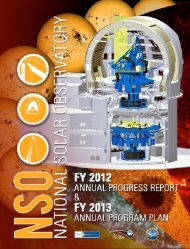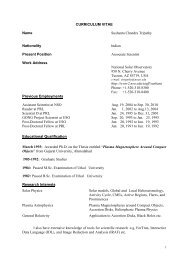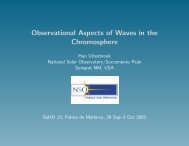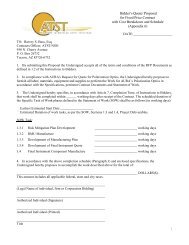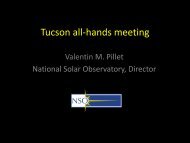F2 - ATST
F2 - ATST
F2 - ATST
You also want an ePaper? Increase the reach of your titles
YUMPU automatically turns print PDFs into web optimized ePapers that Google loves.
Cultural Surveys Hawai‘i Job Code: HALEA 2Traditional and Historic Backgroundwas struck by the fact that the dialect spoken by Hawaiians was very similar to the language ofthe Society Islanders, and that he was able to converse in a simple version of the Hawaiianlanguage in a very short amount of time (Ellis 1826:18). In this way, Ellis was able to acquireinformation on the culture and traditions of Hawai‘i with reasonable accuracy. As he made hisway to witness an eruption of the volcano at Kīlauea, Ellis traveled from Kā‘u by way ofKapāpala, and accumulated native bearers and supplies required for weeks of travel (Ellis1826:178).His description of the volcanic activity of Kīlauea was highlighted by his gathering of manytraditional stories of Pele, the Hawaiian mythological goddess thought to control the power ofthe volcano. Although Ellis did not investigate Haleakalā crater on Maui, his observations of thevolcanic mountains of Hawai‘i were discussed directly with American protestant missionariesserving at stations across the Sandwich Islands. His description of the lore of the volcanogoddess Pele, including his account of Kapiolani’s famous journey to challenge the supernaturalpowers of Pele (Ellis 1963:187), were of great interest to the American missionaries, whoorganized an expedition to the summit of Haleakalā six years later (see “An Expedition byRichards, Andrews and Green to the Summit of Haleakalā” in Section 3.3 below).Ellis (1826:204) described the “superstitions” of the native Hawaiians in regard to offeringsof an edible native plant, the ‘ōhelo (Vaccinium calycinum). The origin of the use of the ‘ōhelowas not transmitted to Ellis, but it was clear that Pele, goddess of the lava, required much in theway of ritual:As we passed along, we observed the natives, who had hitherto refused to touchany of the ‘ōhelo berries, now gather several bunches, and, after offering a part toPele eat them very freely. They did not use much ceremony in theiracknowledgment; but when they had plucked a branch containing several clustersof berries, they turned their faces towards the place where the greatest quantity ofsmoke and vapour (sic) issued, and, breaking the branch they held in their hand intwo, they threw one part down the precipice, saying at the same time, “E Pele, eiaka ohelo ‘au; e taumaha aku wau ia oe, e ai hoi au tetahi” [translated meaning]“Pele, here are your ‘ōhelos: I offer some to you, some I also eat” (Ellis 1826:205-06).As Ellis recorded the traditions surrounding the worship of Pele, he noted that the volcanicsites of Kīlauea, as well as the dormant cinder cones and mountain ranges throughout the islandsof Hawai‘i were considered sacred (Ellis 1826:204). He recorded stories telling of the commonpeople being barred from entering the mountainous areas reserved for Pele (Ellis 1826:190) andher godlike brothers and sisters:They considered it the primeval abode of their volcanic deities. The conical craters,they said, were their houses, where they frequently amused themselves by playingat Konane [a game similar to checkers], the roaring of the furnace and the cracklingof the flames were the kani of their hura, (music of their dance), and the redflaming surge was the surf wherein they played, sportively swimming on the rollingwaves (Ellis 1826:216).Ellis was also able to determine from his informants that the fires of the underworld had beenburning from the beginning of time. He observed that the stories they told referred to a timelineAPPENDIX F (2): Supplemental Cultural Impact Assessment For the Proposed Advanced 19Technology Solar Telescope (<strong>ATST</strong>) at Haleakalā High Altitude ObservatoriesTMK (2) 2-2-07:008





